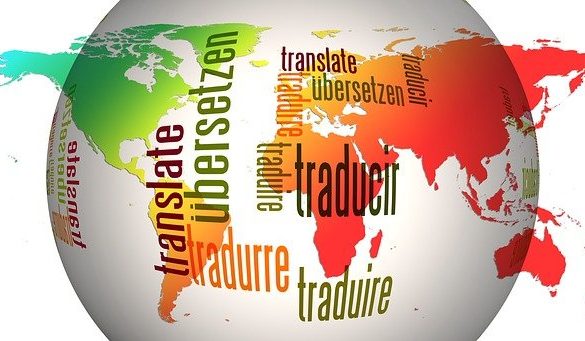
How To Find The Best Blend Of Translation Tech And Human Expertise To Take Your Start-Up Overseas
Translation Tech has never been easier. There are countless translation apps and software packages that can help you deliver your messages in other languages, with Google Translate being the best known of them. However, an app still can’t tell you how a message will be received in another culture. That’s where it pays to look into blending translation tech and human expertise when starting a business overseas.
New trends in tech like increased cybersecurity and smoother supply chain is essential for work and life in 2021. As stated pointed out by Espresso Translations, Translation tech is becoming smoother as well, with speech recognition, post-editing machine translation, and outsourced translation services leading the way.
Post-Editing Machine Translation in Translation Services Leading the Way
Machine translation has come a long way in recent years. However, it still isn’t 100% accurate. Many companies try to run presentations or even marketing messages through apps like Google Translate, only to find out right before a major deadline that the translation has some glaring errors. Ofer Tirosh, CEO of translation services Tomedes, has seen this happen many times. He advises:
“This is where post-editing machine translation comes in. This service takes both the machine translation and the original document and gets the machine translation up to professional quality with a fairly short turnaround time. If you run into last-minute problems with machine translation as part of your plans around starting a business overseas, look into post-editing machine translation.”
To put machine translation into perspective, even neural network AI translation only has a 60-90% accuracy rate for the instant translations it delivers. That’s a very wide margin. It’s also high enough that it risks making marketing messages look spammy, making mistakes in instruction documents and producing enough errors to void a contract.
Current machine translators work well enough to provide a translation on the go that means you can get the gist of a document. However, they’re still not up to the task of helping people produce high-quality documentation when starting a business overseas. As we’ll discuss below, that still needs a human touch.
Making Sense Out of Proper Translations
How do I start a business in a foreign country? With launching any business, marketing is a major consideration. You’ll need to translate your marketing messages carefully.
One task a machine still can’t handle is localization. This needs a human understanding of culture and regulations, human judgement and a human eye for layout. Translation tasks include:
- Making sure the layout of a document looks good in the new language
- Keeping a product or message compliant with local privacy, disclosure and other regulations
- Adjusting the message so it fits in with the local culture and consumer preferences
- Changing formatting like addresses, phone numbers and currency symbols
- Updating graphics to fit the local culture, like reshooting photos using local models
Another part of the translation process is transcreation. This usually applies to marketing materials. It is the process of adapting a message so that it achieves the same results, though its style, tone and content may change significantly.
For example, marketing tends to use many different types of figurative language, such as idioms. Many idioms do not translate directly. There is a Thai phrase: ชาติหน้าตอนบ่าย ๆ. It literally translates to “One afternoon in your next reincarnation” in English. It means that something is never going to happen. The religious context and meaning aren’t as easily understood in Western cultures. Over in the West, the phrase is better translated as, “When pigs fly,” or, “Not a snowball’s chance in Hell.”
Translation can bridge these cultural gaps while keeping core marketing messages intact.
A machine simply can’t keep up with the cultural aspects that underlie figurative language. In fact, just for fun, we put the Thai phrase above into Google Translate. It comes out as, “Next life in the afternoon.” That makes no sense.
Finding the Right Translation Services
To find the best translation service for your needs, start by researching where you want to expand overseas. Which country is best for startups? US News ranked some of the easiest countries to start a business in; Germany, Japan and the United States come out on top. Germany was particularly attractive, in part thanks to its $4.0 trillion GDP, 82.9 million residents and $52,386 per capita GDP.
You should, of course, also look at how your products or overseas business service ideas will slot into local markets. Germany, for instance, is known for a lower rate of social media use than many countries, so trying to launch a new social media service in that market might not be a good idea. You can look at demographics surveys, POS data or social media topic analysis to see what’s important to consumers in a certain country or region.
Once you decide on which overseas business opportunities to pursue and where, find out which languages are spoken there. Then start searching for translation services or business help by language, using terms like starting a business overseas in Chinese, starting a business overseas in Spanish, starting a business overseas in French and so forth. You can find translation services in your area by using local search terms, like translation services UK, translation services near me or document translation UK.
It’s essential to vet your chosen translation company or translator thoroughly. Check online reviews and examples of past work. For companies, look them up on the Better Business Bureau and interrogate them as to their language and business sector expertise, as well as how they handle quality assurance matters.

